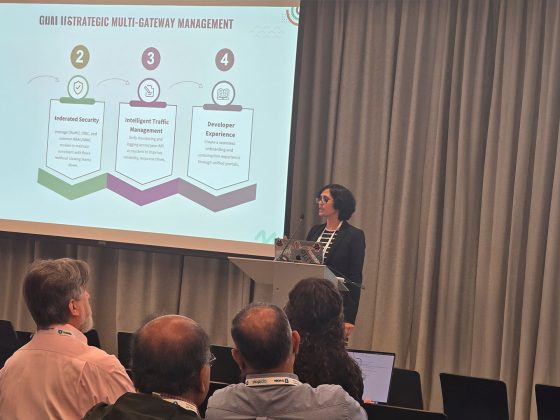Organizational culture is often described as the soul of a company—a set of shared values, beliefs, and behaviors that shape how work gets done. For executives, fostering a strong, positive culture is not just a responsibility; it’s a strategic imperative. Culture directly impacts employee engagement, productivity, innovation, and customer satisfaction. This article explores how executives influence organizational culture, the challenges they face, and the strategies they can use to create a thriving workplace.
The Executive’s Role in Shaping Culture
Executives set the tone for culture through their actions, decisions, and communication. While HR departments often lead initiatives around engagement and values, it is the behavior of senior leaders that ultimately defines how these principles are lived within the organization.
For example, an executive who values transparency will foster an open-door policy, encourage honest feedback, and share information broadly. Conversely, a lack of alignment between stated values and executive behavior can erode trust and create cultural dissonance.
Mary Barra, CEO of General Motors, exemplifies the role of an executive in cultural transformation. Barra’s focus on integrity and accountability reshaped GM’s culture following its ignition switch crisis. By prioritizing safety and encouraging employees to speak up, Barra demonstrated how executive influence can rebuild trust and reinforce organizational values.
Key Elements of a Strong Organizational Culture
- Shared Vision and Values
A clear vision and set of values provide a foundation for culture. Employees need to understand the organization’s purpose and how their work contributes to broader goals.Patagonia, for instance, has built a culture centered on environmental sustainability. By aligning its business practices with this mission, the company inspires employees and customers alike to embrace its values. - Employee Empowerment
Empowering employees fosters engagement and ownership. When individuals feel trusted to make decisions and take initiative, they are more likely to contribute meaningfully to the organization. - Collaboration and Inclusion
A collaborative and inclusive culture encourages diverse perspectives and teamwork. Executives who champion inclusion create environments where innovation and problem-solving thrive. - Recognition and Reward
Recognizing and rewarding behaviors that align with cultural values reinforces those behaviors. This can range from formal awards to simple expressions of gratitude.
Strategies for Executives to Shape Culture
- Lead by Example
Culture starts at the top. Executives must embody the values they want to instill in the organization. This means demonstrating integrity, fostering open communication, and treating employees with respect.For example, Satya Nadella transformed Microsoft’s culture by modeling a growth mindset. His emphasis on learning, curiosity, and empathy encouraged employees to adopt these qualities, driving innovation and collaboration. - Communicate Consistently
Clear and consistent communication is essential for reinforcing cultural values. Executives should use every opportunity—meetings, town halls, emails—to articulate the organization’s vision and celebrate successes that align with its mission. - Foster Trust and Psychological Safety
Employees are more likely to engage and innovate when they feel safe to express ideas and concerns. Executives can build trust by being approachable, listening actively, and responding to feedback constructively. - Measure and Adapt
Culture is dynamic, and executives must regularly assess its health. Tools like employee surveys, engagement metrics, and turnover rates provide insights into cultural strengths and areas for improvement.
The Challenges of Cultural Change
Shaping or transforming culture is not without challenges. Common obstacles include:
- Resistance to Change: Employees and managers may cling to old ways of working, especially if those methods were previously rewarded.
- Cultural Misalignment: When there’s a gap between stated values and actual practices, it can lead to cynicism and disengagement.
- Scaling Culture: As organizations grow, maintaining a cohesive culture becomes more complex.
To overcome these challenges, executives must engage employees at all levels, communicate the “why” behind cultural initiatives, and ensure alignment between strategy and values.
Case Study: Howard Schultz and Starbucks
Howard Schultz’s leadership at Starbucks provides a compelling example of cultural influence. Schultz emphasized creating a “third place” between home and work, where employees (or “partners”) and customers felt valued and connected.
Schultz implemented initiatives such as healthcare benefits for part-time employees and the Starbucks College Achievement Plan, reinforcing the company’s commitment to employee well-being. His focus on culture not only strengthened internal engagement but also enhanced customer loyalty, driving the company’s growth.
The Long-Term Impact of Culture
A strong organizational culture is a competitive advantage. Companies with engaged employees outperform their peers in productivity, profitability, and customer satisfaction.
Conversely, a toxic culture can lead to high turnover, reputational damage, and reduced performance. High-profile scandals, such as those at Wells Fargo and Uber, illustrate the consequences of cultural neglect.
Executives who prioritize culture position their organizations for long-term success. By fostering trust, inclusivity, and alignment, they create environments where employees and stakeholders thrive.
The power of influence is one of the most important tools in an executive’s arsenal. By shaping organizational culture, executives not only enhance workplace dynamics but also drive strategic outcomes. A thriving culture inspires employees, strengthens customer relationships, and builds resilience in a competitive landscape.
For today’s leaders, the message is clear: culture is not an afterthought—it is the foundation of success. Executives who invest in building and nurturing culture leave a legacy that extends far beyond their tenure, shaping the future of their organizations and industries.
Image Source: Unsplash.com









